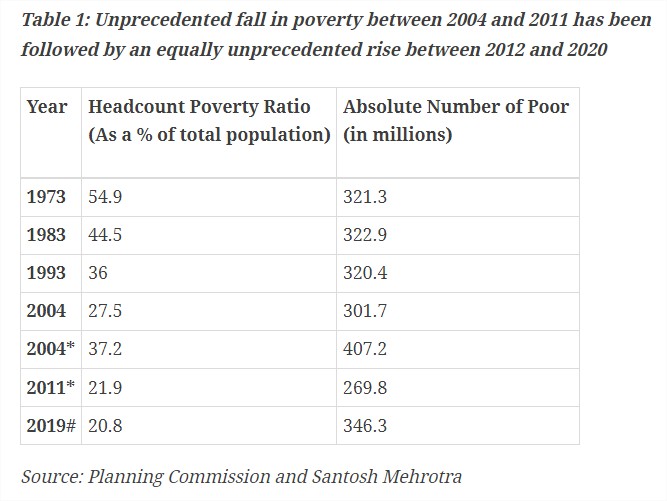7667766266
enquiry@shankarias.in
What is the issue?
There have been debates over whether the poverty has gone up during the recent years and the answer depends on whether one looks at the overall incidence of poverty in percentage terms or the absolute number of poor.

Reference
https://indianexpress.com/article/explained/explainspeaking-a-brief-history-of-indias-poverty-levels-7612086/